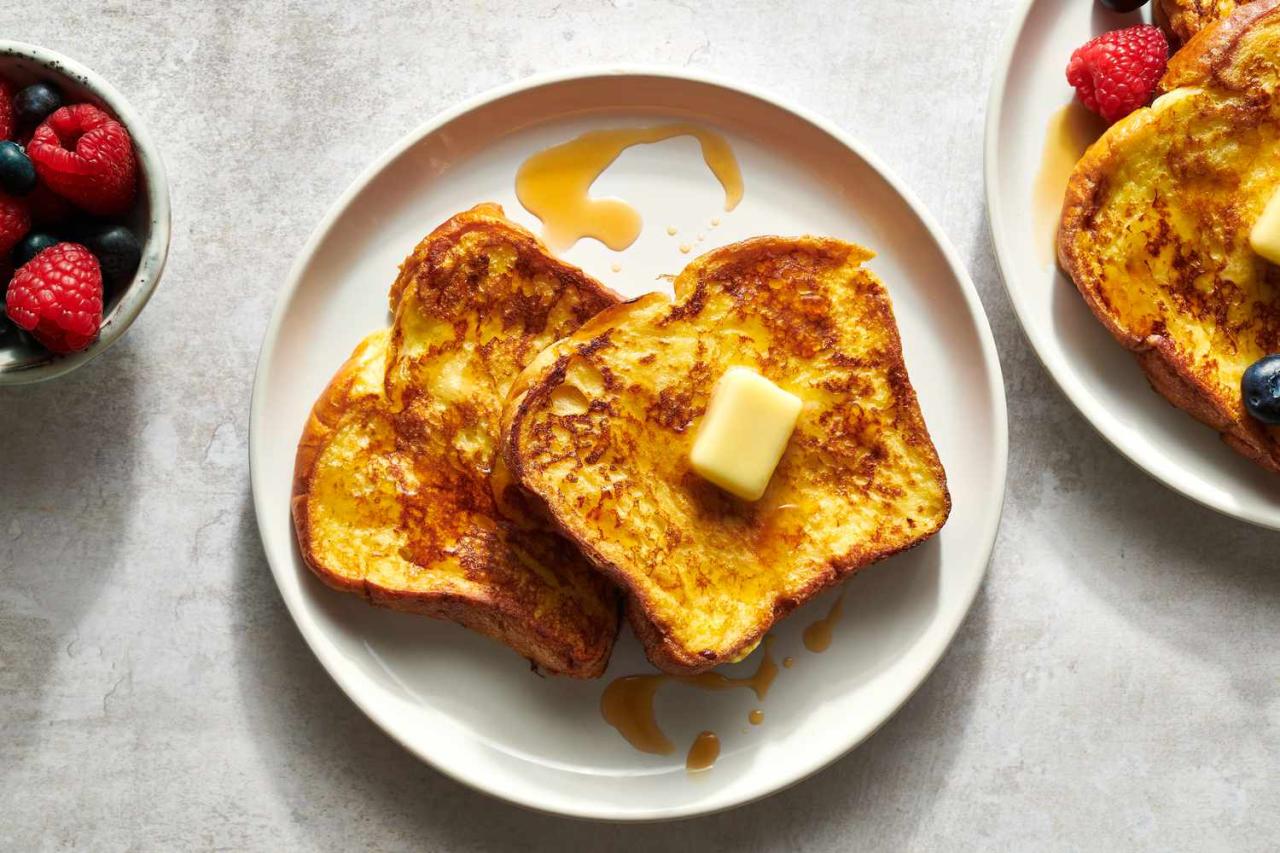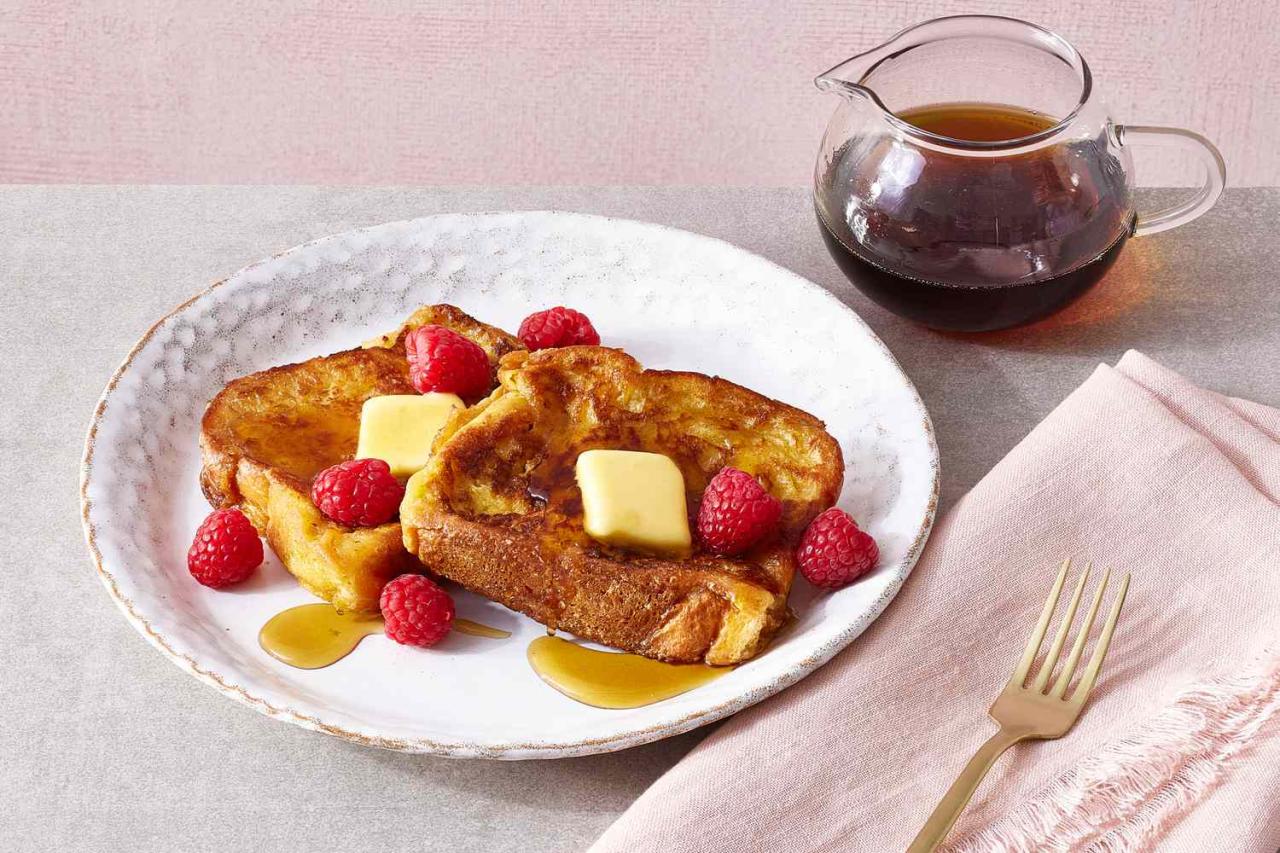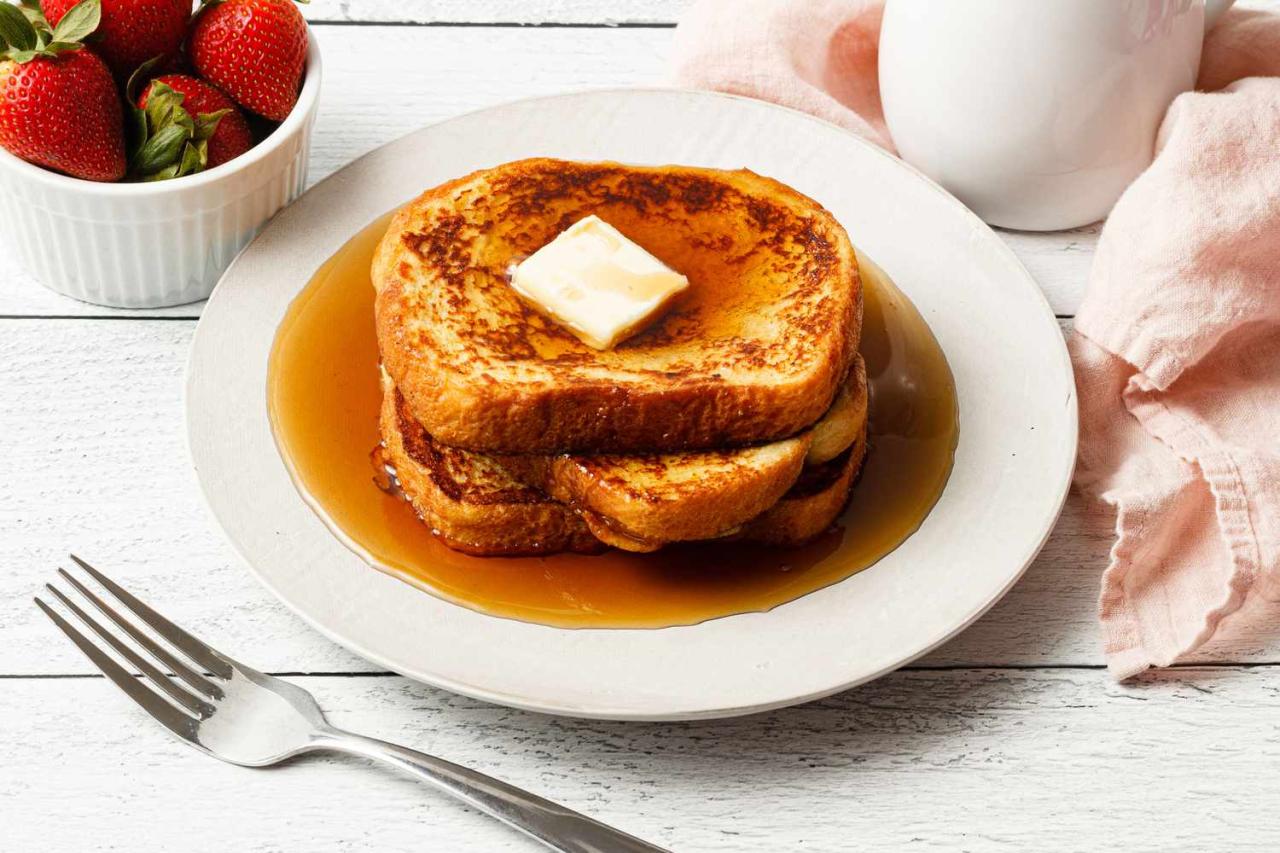Hello, fellow breakfast enthusiasts! Today, we’re going to explore the delightful world of a beloved breakfast staple that has always been a personal favorite – the Classic French Toast. This simple yet indulgent dish, with its golden-brown exterior and soft, custardy interior, is a testament to the magic that can happen when everyday ingredients are transformed with a little bit of love and care.
Despite its name, French Toast isn’t originally from France. The concept of soaking bread in a mixture of eggs and milk and then frying it dates back to ancient times and has been adopted by various cultures around the world. However, it’s the French version, known as ‘pain perdu’ or ‘lost bread,’ that has become internationally recognized as French Toast. Its enduring appeal lies in its ability to turn stale bread into a delicious and satisfying meal.
What makes the Classic French Toast so irresistible? It’s the perfect harmony of flavors and textures. The outside is toasted to a golden-brown perfection, providing a slight crunch that gives way to a soft, custardy interior. Each bite is a comforting blend of sweetness and richness, making it a breakfast dish that’s hard to resist.


Classic French Toast
Equipment
- 1 skillet
- 1 bowl
- 1 plate
Ingredients
- 6 slices white bread
- 2 eggs, beaten
- ⅔ cup whole milk
- ¼ tsp powdered cinnamon
- ¼ tsp ground nutmeg
- 1 tsp pure vanilla
- Dash of salt
Instructions
- In a bowl, add in the beaten eggs, whole milk, dash of salt, powdered cinnamon, ground nutmeg and pure vanilla. Whisk until lightly beaten.
- In a skillet set over medium to high heat, grease with butter or cooking spray.
- Dip the bread slices in the egg mixture until coated on two sides.Transfer into the skillet and cook for 5 minutes or until golden on both sides.
- Remove and transfer to a plate. Repeat with the remaining bread slices.
- Serve immediately with syrup.
Video
Notes
The key to achieving the perfect French toast lies in selecting the right type of bread. Opt for a thick, sturdy bread like brioche, challah, or French baguette. These breads have a soft interior and a slightly crusty exterior, which allows them to soak up the egg mixture without becoming overly soggy. Avoid using fresh bread, as it tends to disintegrate when soaked. Day-old or slightly stale bread works best for this recipe.
Cooking Tips for the Perfect Classic French Toast: A Detailed Guide

Now that you have your recipe, let’s delve deeper into the art of making perfect Classic French Toast. This isn’t just about following a recipe; it’s about understanding the nuances that can elevate your French Toast from good to exceptional. Here are some detailed tips to guide you on this journey:
1. Choose the right bread: The Foundation of Flavor
The choice of bread plays a crucial role in the outcome of your French Toast. A sturdy bread like brioche, challah, or a thick-cut country loaf works best for French Toast. These types of bread can soak up the egg mixture without falling apart, resulting in a French Toast with a crisp exterior and a soft, custardy interior.
Avoid using thin or soft breads as they can become too soggy when soaked in the egg mixture. Also, slightly stale bread is often better than fresh bread because it can absorb more of the egg mixture without becoming too mushy.
2. Don’t skimp on the soak: The Art of Absorption
The soaking process is key to achieving the perfect texture for your French Toast. You want the bread to soak up enough of the egg mixture to become moist and flavorful, but not so much that it becomes overly soggy or falls apart.
Allow the bread to soak in the egg mixture long enough to absorb it, usually about 15-20 seconds per side for thick-cut bread. However, the exact soaking time can vary depending on the type and thickness of your bread, so you may need to adjust accordingly. Remember, the goal is to have the bread saturated with the egg mixture, but still firm enough to hold its shape.
3. Control your heat: The Balance of Crispness and Custardiness
Cooking your French Toast at the right temperature is crucial for achieving the perfect balance of a crispy exterior and a custardy interior. Too high heat can cause the outside to burn before the inside is fully cooked, while too low heat can result in a soggy, undercooked French Toast.
Cook your French Toast over medium heat for the best results. This allows the bread to cook evenly, achieving a golden-brown crust on the outside while allowing the inside to cook through to the perfect custardy texture. Be patient and resist the temptation to crank up the heat to speed up the process; good French Toast takes time.
Serving Suggestions

1. Toppings: The Finishing Touch
Maple syrup is a classic choice for topping Classic French Toast, but don’t limit yourself to just that. A dusting of powdered sugar, a dollop of whipped cream, a sprinkle of chopped nuts, or a handful of fresh berries can add extra flavor and texture. For a truly decadent treat, consider a drizzle of caramel sauce or a spoonful of Nutella.
2. Side dish: A Savory Contrast
While French Toast is delicious on its own, pairing it with a savory side dish can create a more balanced and satisfying meal. Bacon or sausage can add a savory contrast to the sweet French Toast, while a side of fresh fruit can provide a refreshing counterpoint.
3. Drink Pairing: The Perfect Sip
A cup of coffee or a glass of freshly squeezed orange juice can complement your Classic French Toast beautifully. The bitterness of the coffee or the acidity of the orange juice can balance out the sweetness of the French Toast, creating a harmonious breakfast experience.
FAQs

Here are some frequently asked questions about Classic French Toast:
1. Can I add other flavors to my French Toast?
Absolutely! While the classic version is typically flavored with vanilla and cinnamon, feel free to experiment with other flavors. Nutmeg, orange zest, or even a splash of liqueur like Grand Marnier can add an interesting twist to your French Toast. Just remember to balance the flavors so that no single flavor overwhelms the others.
2. Can I make my Classic French Toast in advance?
Yes, you can prepare the egg mixture and soak the bread in advance. However, it’s best to cook the French Toast just before serving to ensure it’s fresh and crispy. If you need to cook the French Toast in batches, keep the cooked pieces warm in a low oven until ready to serve.
Making Classic French Toast is a delightful culinary adventure that showcases the beauty of transforming simple ingredients into something truly special. It’s a labor of love that rewards you with a breakfast dish that’s not only delicious but also deeply satisfying to create. So put on your apron, preheat your skillet, and get ready to fall in love with the art of making Classic French Toast. Bon appétit!
I hope you found this post helpful and enjoyable. If you have any questions or want to share your Classic French Toast experiences, feel free to drop a comment below. Until next time, happy cooking!